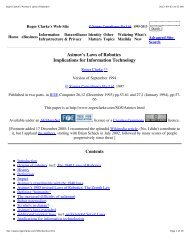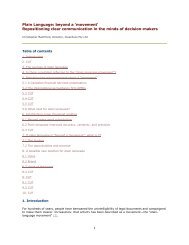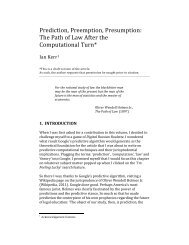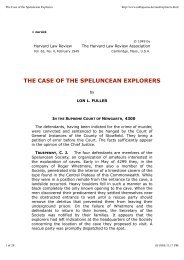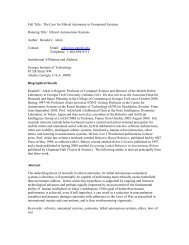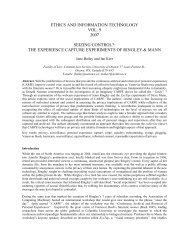Materializing Morality: Design Ethics and Technological Mediation.
Materializing Morality: Design Ethics and Technological Mediation.
Materializing Morality: Design Ethics and Technological Mediation.
You also want an ePaper? Increase the reach of your titles
YUMPU automatically turns print PDFs into web optimized ePapers that Google loves.
Verbeek / <strong>Materializing</strong> <strong>Morality</strong> 365<br />
relationships between humans <strong>and</strong> technological artifacts. He discerned<br />
several relationships human beings can have with technologies. Two of<br />
these can be indicated as relations of mediation. 2<br />
First, Ihde discerns the embodiment relation, which is his equivalent<br />
to Heidegger’s readiness-to-h<strong>and</strong>. In the embodiment relation, technologies<br />
are incorporated by their users, establishing a relationship between<br />
humans <strong>and</strong> their world through the technological artifact. This embodiment<br />
relation, for instance, occurs when looking through a pair of glasses;<br />
the artifact is not perceived itself, but it helps to perceive the environment.<br />
<strong>Technological</strong> artifacts become extensions of the human body here, as it<br />
were. Second, Ihde discerns the hermeneutic relation. In this relation, technologies<br />
do not provide access to reality because they are incorporated but<br />
because they provide a representation of reality, which requires interpretation<br />
(hence the name “hermeneutic relation”). A thermometer, for instance,<br />
establishes a relationship between humans <strong>and</strong> reality in terms of temperature.<br />
Reading off a thermometer does not result in a direct sensation of<br />
heat or cold but gives a value that requires interpretation to tell something<br />
about reality.<br />
Ihde shows that technologies, when mediating our sensory relationship<br />
with reality, transform what we perceive. According to Ihde, the transformation<br />
of perception always has a structure of amplification <strong>and</strong> reduction.<br />
Mediating technologies amplify specific aspects of reality while reducing<br />
other aspects. When looking at a tree with an infrared camera, for instance,<br />
most aspects of the tree that are visible to the naked eye get lost, but at the<br />
same time, a new aspect of the tree becomes visible: one can now see<br />
whether it is healthy. Ihde calls this transforming capacity of technology<br />
“technological intentionality”: technologies have “intentions,” they are not<br />
neutral instruments but play an active role in the relationship between<br />
humans <strong>and</strong> their world.<br />
These intentionalities are not fixed properties of artifacts, however. They<br />
get shape within the relationship humans have with these artifacts. Within<br />
different relationships, technologies can have a different identity. The telephone<br />
<strong>and</strong> the typewriter, for instance, were not developed as communication<br />
<strong>and</strong> writing technologies but as equipment for the blind <strong>and</strong> the hard of<br />
hearing to help those individuals hear <strong>and</strong> write. In their use contexts, they<br />
were interpreted quite differently, however. This phenomenon is what Ihde<br />
calls “multistability”: a technology can have several stabilities, depending<br />
on the way it is embedded in a use context. <strong>Technological</strong> intentionalities,<br />
therefore, are always dependent on the specific stabilities that come about.<br />
Downloaded from sth.sagepub.com at QUEENS UNIV LIBRARIES on November 30, 2011



